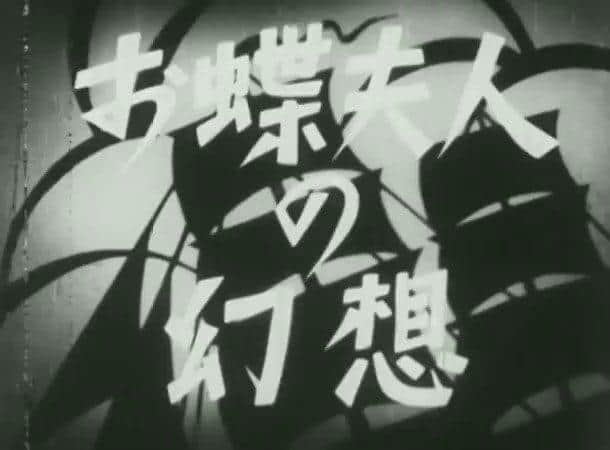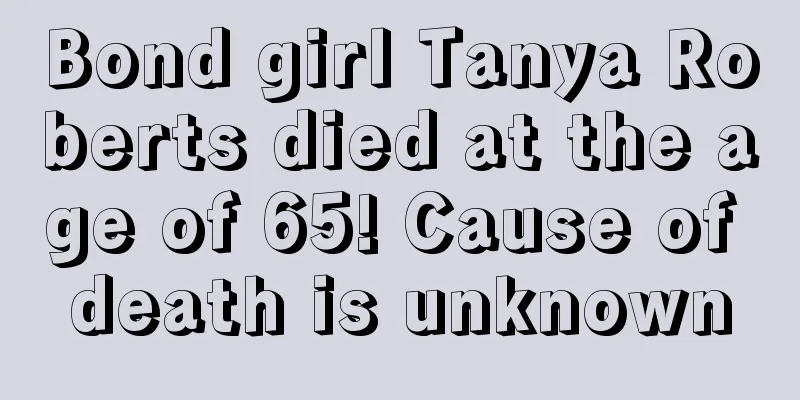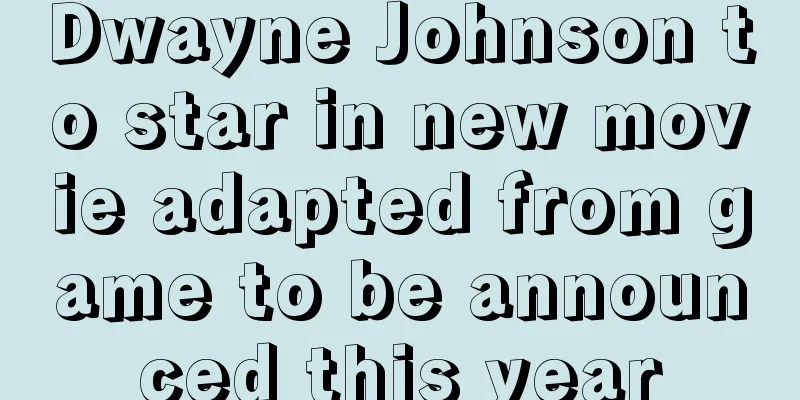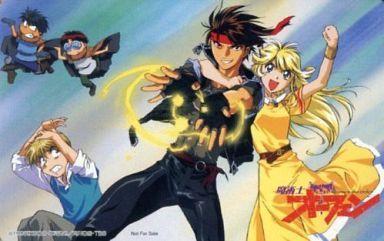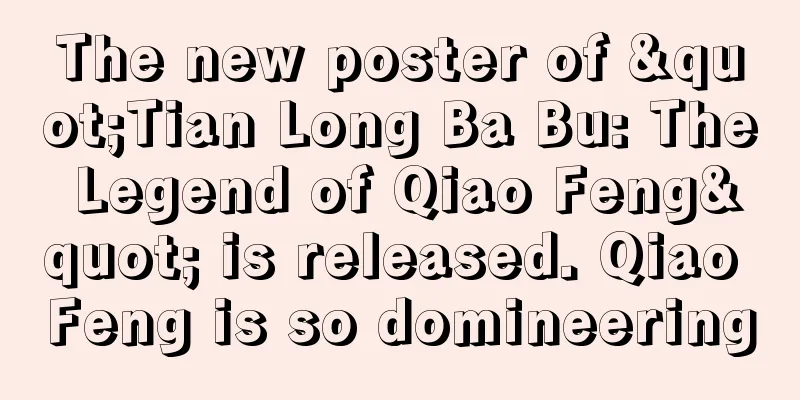Dangobei Torimonochō: Open Sesame Chapter: Exploring the new appeal of period dramas
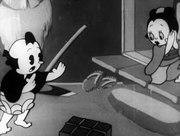
Dangobei Detective Story: Open Sesame - Dangobeetorimonochou and Hirakegomanomamaki■ Public Mediatheater ■ Original MediaAnime Original ■ Release date1955 ■Distribution companyOku Shokai ■ Number of EpisodesEpisode 1 ■ Production・Produced by Chiyogami Eigasha ■ Story The leader of the Ishikawa Goemon-style bandits takes the stolen chest to a mountain fortress and opens a large rock in a cave with the spell "Open Sesame." Dangobei, who witnessed this, imitates the spell and retrieves the chest. The bandits come to Dangobei's house to retrieve it, but he defeats them with a strategy. ■Explanation The title was changed from "Forty Thieves" in 1952. ■ Main staffProduced by Chiyogami Eigasha, Animation by Nobuo Ofuji, Direction by Nobuo Ofuji, Background by Masao Kumakawa, Music by Kyosuke Kami, Distribution by Oku Shokai Dangobei Torimonochō: Open Sesame Chapter - Detailed Review and RecommendationReleased in 1955, "Dangobei Torimonochō: Open Sesame Chapter" is one of the most notable animated films produced during the Showa era. The film was produced by Chiyogami Eigasha and distributed by Oku Shokai. Although the story is original to the anime, it tells the tale of bandits based on the legend of Ishikawa Goemon, and made a strong impression on viewers at the time. The appeal of the storyThe story of "Dangobe Torimonochō: Open Sesame Chapter" begins with a scene in which an Ishikawa Goemon-style bandit leader steals a chest of 1000 ryo and carries it to a mountain fortress. The scene in which a large rock in a cave is opened with the magic spell "open sesame" creates a mystical atmosphere for the viewer. The plot in which Dangobei imitates the spell and retrieves the chest is both humorous and thrilling, and would have been very entertaining for children at the time. In the scene where the bandits come to Dangobei's house to retrieve it, Dangobei's resourcefulness and strategy shines through. The process of defeating the bandits gives the viewer a sense of tension and satisfaction, and serves as the perfect climax to the story. This type of storytelling was first-rate even among Japanese animation films of the time, and left a strong impression on viewers. Visual and drawingThe artwork for this work was done by Ofuji Noburo, an important figure in the animation industry during the Showa period, and his artwork fully demonstrates his talent. The characters' movements and expressions are extremely realistic, and have the power to encourage the viewer to empathize with them. Also, the work of Kumakawa Masao, who was in charge of the backgrounds, should not be overlooked. The depictions of the mountain forts and caves play an important role in drawing the viewer into the world of the story. In particular, the scene where a huge rock in a cave opens with the spell "Open Sesame" is visually very impressive. In this scene, the rock slowly moves and the treasure chest appears, depicted so realistically that it leaves a strong impact on the viewer. This kind of visual expression is extremely advanced considering the technological level of the time, and it greatly enhances the appeal of the work. Music and SoundThe music was composed by Kami Kyosuke, a composer who was active in the world of Japanese film music during the Showa period, and his music plays an important role in this film. His music, especially in scenes that heighten tension, has the power to arouse emotions in the viewer. Also, the music in the scene where the bandits come to Dangobei's house to retrieve his body has the effect of giving the viewer a thrill. The sound effects are also not to be missed. The sound effects in the scene where the cave rock opens up give the viewer a sense of realism and have the power to draw them into the world of the story. The sound effects in the scene where the bandits are defeated are also an important element that gives the viewer a sense of satisfaction. Such sound effects greatly enhance the appeal of the work. Historical background and influence"Dangobei Torimonochō: Open Sesame Chapter" was released in 1952 under the revised title of "Forty Thieves." This work had a major impact on the Japanese animation film industry at the time. In particular, the story based on the legend of Ishikawa Goemon made a strong impression on viewers and influenced subsequent animation works. This work was the result of the combined production power of Chiyogami Eigasha and distribution power of Oku Shokai, and contributed to the development of the Japanese animation film industry at the time. In particular, Ofuji Noburo's drawings and Kami Kyosuke's music influenced subsequent animation works and contributed to raising the level of the entire industry. Recommendations and ratings"Dangobei Torimonochō: Open Sesame" is a remarkable work among the animated films of the Showa period, with a powerful impact on viewers. The compelling story, the quality of the visuals and drawings, the music and sound effects, and the historical context and influences make this work very worthy of high praise. In particular, the story based on the legend of Ishikawa Goemon left a strong impact on viewers and influenced subsequent animation works. Furthermore, Ofuji Noburo's drawings and Kami Kyosuke's music greatly enhanced the film's appeal and had the power to encourage strong emotional involvement from viewers. Considering these elements, "Dangobe Torimonochō: Open Sesame Chapter" can be said to be one of the best animated films of the Showa period. The reason I recommend this film is because it has it all: a compelling story, high quality visuals and animation, music and sound effects, and historical background and influence. In particular, the story, based on the legend of Ishikawa Goemon, made a strong impact on viewers and influenced subsequent animation works. Furthermore, Ofuji Nobuo's drawings and Kami Kyosuke's music greatly enhance the film's appeal and have the power to encourage strong emotional involvement in the viewer. Considering these elements, "Dangobe Torimonochō: Open Sesame Chapter" can be said to be one of the finest animated films of the Showa period. The reason I recommend this film is because it has it all: a compelling story, high quality visuals and animation, music and sound effects, and historical background and influence. In particular, the story, based on the legend of Ishikawa Goemon, made a strong impact on viewers and influenced subsequent animation works. Furthermore, Ofuji Nobuo's drawings and Kami Kyosuke's music greatly enhance the film's appeal and have the power to encourage strong emotional involvement in the viewer. Considering these elements, "Dangobe Torimonochō: Open Sesame Chapter" can be said to be one of the finest animated films of the Showa period. The reason I recommend this film is because it has it all: a compelling story, high quality visuals and animation, music and sound effects, and historical background and influence. In particular, the story, based on the legend of Ishikawa Goemon, made a strong impact on viewers and influenced subsequent animation works. Furthermore, Ofuji Nobuo's drawings and Kami Kyosuke's music greatly enhance the film's appeal and have the power to encourage strong emotional involvement in the viewer. Considering these elements, "Dangobe Torimonochō: Open Sesame Chapter" can be said to be one of the finest animated films of the Showa period. The reason I recommend this film is because it has it all: a compelling story, high quality visuals and animation, music and sound effects, and historical background and influence. In particular, the story, based on the legend of Ishikawa Goemon, made a strong impact on viewers and influenced subsequent animation works. Furthermore, Ofuji Nobuo's drawings and Kami Kyosuke's music greatly enhance the film's appeal and have the power to encourage strong emotional involvement in the viewer. Considering these elements, "Dangobe Torimonochō: Open Sesame Chapter" can be said to be one of the finest animated films of the Showa period. The reason I recommend this film is because it has it all: a compelling story, high quality visuals and animation, music and sound effects, and historical background and influence. In particular, the story, based on the legend of Ishikawa Goemon, made a strong impact on viewers and influenced subsequent animation works. Furthermore, Ofuji Nobuo's drawings and Kami Kyosuke's music greatly enhance the film's appeal and have the power to encourage strong emotional involvement in the viewer. Considering these elements, "Dangobe Torimonochō: Open Sesame Chapter" can be said to be one of the finest animated films of the Showa period. The reason I recommend this film is because it has it all: a compelling story, high quality visuals and animation, music and sound effects, and historical background and influence. In particular, the story, based on the legend of Ishikawa Goemon, made a strong impact on viewers and influenced subsequent animation works. Furthermore, Ofuji Nobuo's drawings and Kami Kyosuke's music greatly enhance the film's appeal and have the power to encourage strong emotional involvement in the viewer. Considering these elements, "Dangobe Torimonochō: Open Sesame Chapter" can be said to be one of the finest animated films of the Showa period. The reason I recommend this film is because it has it all: a compelling story, high quality visuals and animation, music and sound effects, and historical background and influence. In particular, the story, based on the legend of Ishikawa Goemon, made a strong impact on viewers and influenced subsequent animation works. Furthermore, Ofuji Nobuo's drawings and Kami Kyosuke's music greatly enhance the film's appeal and have the power to encourage strong emotional involvement in the viewer. Considering these elements, "Dangobe Torimonochō: Open Sesame Chapter" can be said to be one of the finest animated films of the Showa period. |
<<: Review of "The One-Legged Grasshopper": A unique world view and a moving story
>>: 'Observation of the Moon' review: A moving story with beautiful images and profound themes
Recommend
The animated film "Summer Ghost" will be released this year. The original character design of "The Moon is Beautiful" is directed by
Today (February 19), the first animated film &quo...
The official trailer for the November 22 premiere of "Squid Game: Reality Challenge" has been released
Today (October 24), the video streaming platform ...
Arakawa Under the Bridge x Bridge: What is the appeal of this unique worldview and unique characters?
Arakawa Under the Bridge x Bridge - A unique worl...
New photos of the fourth season of "The Boys" are released, and the homelander and his son appear
New pictures of "The Boys" Season 4 hav...
Girls und Panzer Final Chapter Episode 4 Review and Review: The appeal of tank battles and the deepening of the story
Girls & Panzer Final Chapter Episode 4 Review...
"Shang-Chi and the Legend of the Ten Rings" released a lot of new stills and will be released on September 3
Marvel's first Chinese superhero masterpiece ...
"Kaleido Star: New Wings" Review: What is the brilliance that colors this emotional new chapter?
Kaleido Star: New Wings - moving entertainment an...
Amazon is investing heavily in The Wheel of Time to make it its own Game of Thrones
The fantasy American TV series "The Wheel of...
The new TV animation of the classic game "Girls Frontline" is expected to be broadcast in 2022
The new TV animation "Girls Frontline",...
"Aquaman 2" movie released two new clips
The movie "Aquaman 2: The Lost Kingdom"...
Netflix CG animation series "Resident Evil: Infinite Darkness" official trailer released, broadcast on July 8
Today (May 19), the Chinese official trailer of N...
Uncle Cage joins the monster movie "Rainfield" to play Dracula
According to foreign media IGN, Nicolas Cage has ...
Super Mobile Legend DynaGiga: A thorough evaluation of the attractive mecha design and depth of the story
Super Mobile Legend Dainagiga - Choukidoudensetsu...
The high-definition remake poster of "Chinese Kids" was released and will be broadcast on July 29
Recently, the official Weibo of "China Kids&...
Dota: Dragon's Blood Season 2 Delayed to January 18 on Netflix
The second season of the Dota animated series &qu...



